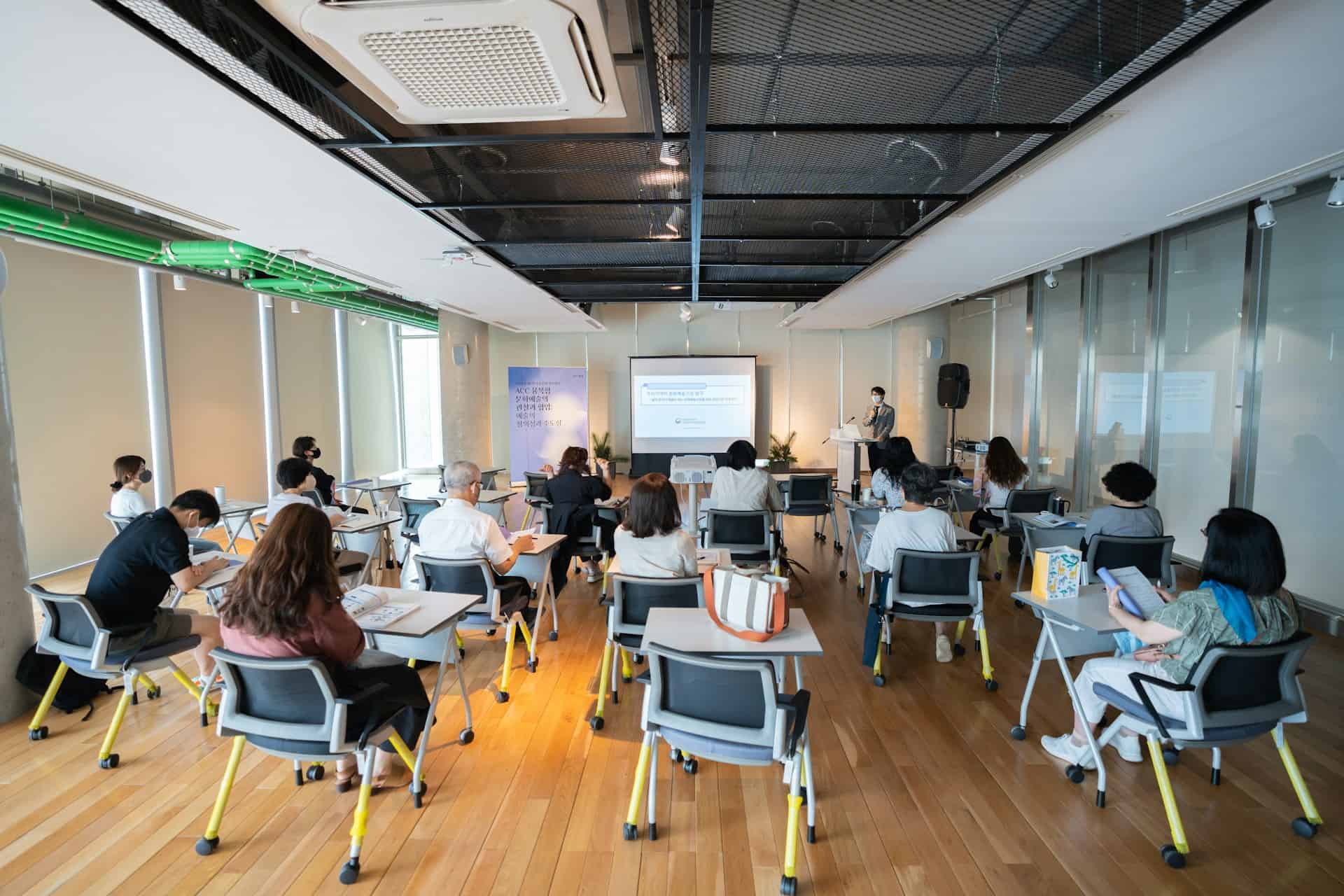Gen AI Demands Associations Keep Learning or Become Obsolete

The rapid advancement of generative AI (Gen AI) presents both a tremendous opportunity and a significant challenge for associations. To fully capitalize on this transformative technology, association leaders must prioritize continuous learning and development, ensuring their staff, volunteers, and members possess the skills and knowledge necessary to navigate this evolving landscape. By doing so, association leaders will empower their stakeholders to embrace innovation and drive organizational success, ultimately enhancing member value and solidifying the association’s role as an industry leader.
Laying the Foundation: Gen AI Demands a Growth Mindset
At the heart of any successful continuous learning initiative lies a growth mindset. This belief that abilities and intelligence can be developed through dedication and hard work is essential to embrace the challenges inherent in mastering new technologies like Gen AI, as a McKinsey report shows. Association leaders can foster this mindset by providing ample opportunities for ongoing education and development. This includes:
- Targeted Training Programs: Offering access to advanced Gen AI courses, specialized workshops, and professional certifications focusing on the latest tools and techniques applicable to association management, such as content creation for newsletters, personalization of member communications, and data analysis for strategic decision-making.
- External Exposure: Sponsoring attendance at industry conferences and seminars to expose staff and volunteers to cutting-edge developments and best practices. This includes insights for improving effectiveness and efficiency, while ensuring ethical Gen AI deployment and managing risks, all within the unique context of associations.
- Recognition and Rewards: Recognizing and rewarding learning achievements to sustain engagement and motivation. When association staff and volunteers feel valued for their efforts to expand their knowledge, they are more likely to continue investing in their own development. This could involve highlighting achievements in internal communications or offering special recognition at annual meetings.
- Chapter and Section Collaboration: Facilitating knowledge sharing and training opportunities across chapters and sections. This ensures that volunteer leaders at all levels have access to the resources they need to effectively integrate Gen AI into their respective areas.
Integrating Learning into the Association Workflow
Making continuous learning a seamless part of daily work routines is crucial for associations. This ensures that learning is not viewed as a separate activity but rather as an ongoing process embedded in employees’ and volunteers’ everyday tasks. Strategies for integration include:
- Embedded Resources: Integrating learning resources, such as Gen AI tutorials, videos, and knowledge bases, directly into the tools and platforms association staff and volunteers use regularly, such as the association management system (AMS), the learning management system (LMS), or project management software.
- Dedicated Learning Time: Scheduling regular “learning sprints” or “innovation hours” to allocate specific times for upskilling or experimenting with new tools, without the pressure of usual responsibilities. For volunteers, this could involve incorporating learning modules into chapter meetings or section events.
- Mentorship Programs: Pairing experienced Gen AI users with those who are newer to the technology. This peer-to-peer learning approach can be particularly effective in an association context, where staff and volunteers often have diverse backgrounds and skill sets.
Practical Application and Experimentation to Meet Gen AI Demands
Encouraging staff and volunteers to immediately apply new knowledge in their work is vital for reinforcing learning and demonstrating its practical benefits. When individuals use newly acquired skills in real-world scenarios, they are more likely to retain that knowledge and gain confidence. This can be achieved by:
- Real-World Projects: Tasking staff and volunteers with applying newly learned Gen AI techniques to current projects after completing relevant training. For instance, a communications team could use Gen AI to draft a first version of a membership renewal campaign, or a chapter could use Gen AI to analyze local member data and tailor programming accordingly.
- Fostering Experimentation: Creating an environment that supports experimentation and innovation. Allowing staff and volunteers the freedom to explore new ideas and test out the latest Gen AI tools can lead to breakthrough innovations that can enhance member value and streamline operations.
- Safe Testing Grounds: Providing access to sandbox environments or pilot projects where staff and volunteers can safely experiment with new Gen AI tools before deploying them on a larger scale. This minimizes risk and encourages exploration. For example, an association could pilot a Gen AI-powered chatbot on a limited section of its website to gauge member response before a full rollout.
Case Study: Transforming an Association with Gen AI
As a consultant specializing in organizational learning and development around the future of work for associations, I recently worked with a mid-sized professional association of about 75 staff looking to integrate Gen AI into their operations. The association faced challenges in upskilling their workforce and volunteer leaders to effectively utilize these new technologies. Over a six-month deployment period, we implemented the following strategies:
- Growth Mindset Training (Months 1-2): We conducted four two-day workshops (averaging 20 participants per workshop) emphasizing the growth mindset and its importance for embracing Gen AI. These workshops included sessions tailored to both staff and key volunteer leaders. Pre- and post-workshop surveys revealed a 40% increase in participants’ self-reported confidence in learning new technical skills. This helped participants overcome initial anxieties and approach Gen AI with a more positive and receptive attitude.
- Embedded Learning Platform (Month 2 onwards): We integrated Gen AI tutorials, short videos (averaging 5 minutes each), interactive quizzes, and a searchable knowledge base directly into their existing AMS and LMS (used by 100% of staff and 85% of active volunteer leaders). Usage metrics over the six months showed an average of 10 learning module completions per participant per month, with peak usage immediately following training sessions and prior to project implementations.
- Pilot Project Implementation (Months 3-6): We launched a pilot project with a team of 10 staff members and 5 chapter leaders, applying Gen AI-driven analytics to their member engagement data. This provided a practical application of their new skills. Over the pilot period, we observed a 20% increase in member engagement with targeted communications in the pilot chapters, as measured by email open rates and event registrations. The accuracy of member segmentation improved from 71% (using previous methods) to 88% with the Gen AI system, leading to more relevant and effective outreach.
- Innovation Hour Initiative (Months 3-6): We implemented weekly “Innovation Hours” (one hour per week, participation optional) where staff and volunteers could explore new Gen AI tools and experiment with different applications. Average weekly attendance was 25 participants. Over the six months, these sessions generated 15 distinct ideas for improving member services or internal processes, four of which were selected for further development and implementation. One implemented idea, using Gen AI to generate more personalized educational content recommendations for members, resulted in a 10% increase in member engagement with the association’s online educational resources over three months of implementation.
As a result of these interventions, the association saw not only a significant increase in staff and volunteer engagement with Gen AI and a more proactive approach to leveraging it for member advantage, but also realized substantial improvements in member engagement and operational efficiency within a relatively short timeframe. This case study demonstrates the powerful impact of a structured, multi-faceted approach to upskilling and integrating Gen AI within an association environment.
Conclusion
Cultivating a continuous learning culture focused on Gen AI is not merely a trend but a necessity for associations seeking to thrive in the age of AI. By fostering a growth mindset, integrating learning into the workflow, encouraging practical application and experimentation, and providing safe testing grounds, association leaders can empower their workforce and volunteers to embrace Gen AI and drive innovation. As the case study demonstrates, these strategies can lead to tangible results, transforming associations into agile and adaptable entities ready to harness the full potential of this transformative technology, ultimately increasing member value and solidifying the association’s position as an industry thought leader. By investing in continuous learning, associations are not just investing in their employees and volunteers; they are investing in their future and the future of the industries they serve.
Key Take-Away
Gen AI demands a growth mindset and continuous learning for association success. Share on XImage credit: ASIA CULTURECENTER/unsplash
Dr. Gleb Tsipursky was named “Office Whisperer” by The New York Times for helping leaders overcome frustrations with hybrid work and Generative AI. He serves as the CEO of the future-of-work consultancy Disaster Avoidance Experts. Dr. Gleb wrote seven best-selling books, and his two most recent ones are Returning to the Office and Leading Hybrid and Remote Teams and ChatGPT for Thought Leaders and Content Creators: Unlocking the Potential of Generative AI for Innovative and Effective Content Creation. His cutting-edge thought leadership was featured in over 650 articles and 550 interviews in Harvard Business Review, Inc. Magazine, USA Today, CBS News, Fox News, Time, Business Insider, Fortune, The New York Times, and elsewhere. His writing was translated into Chinese, Spanish, Russian, Polish, Korean, French, Vietnamese, German, and other languages. His expertise comes from over 20 years of consulting, coaching, and speaking and training for Fortune 500 companies from Aflac to Xerox. It also comes from over 15 years in academia as a behavioral scientist, with 8 years as a lecturer at UNC-Chapel Hill and 7 years as a professor at Ohio State. A proud Ukrainian American, Dr. Gleb lives in Columbus, Ohio.
